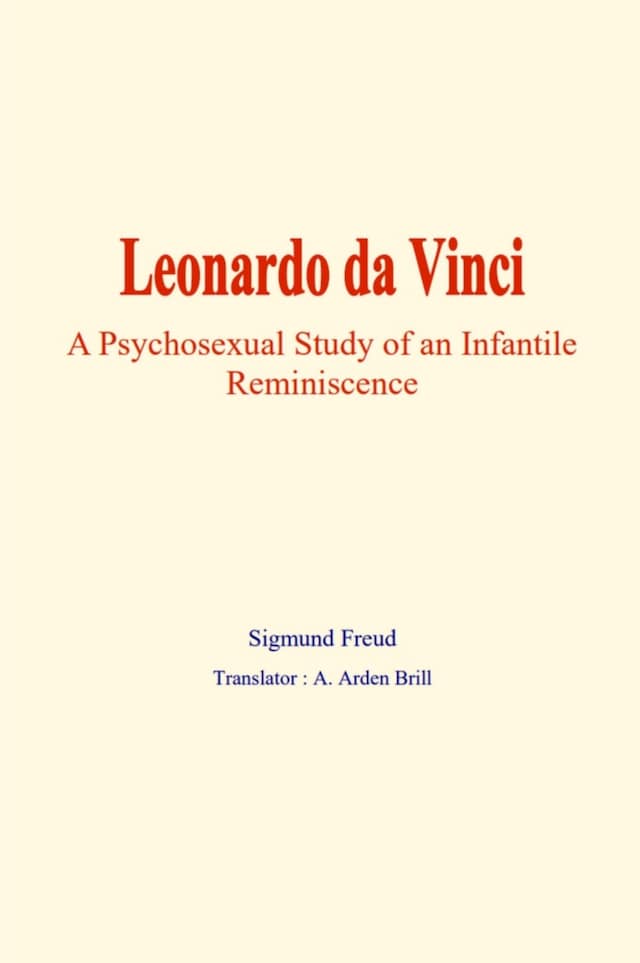
Leonardo da Vinci
A psychosexual study of an infantile reminiscence
Om bogen
When psychoanalytic investigation, which usually contents itself with frail human material, approaches the great personages of humanity, it is not impelled to it by motives which are often attributed to it by laymen. It does not strive "to blacken the radiant and to drag the sublime into the mire"; it finds no satisfaction in diminishing the distance between the perfection of the great and the inadequacy of the ordinary objects…
Leonardo da Vinci was admired even by his contemporaries as one of the greatest men of the Italian Renaissance, still even then he appeared as mysterious to them as he now appears to us. An all-sided genius, "whose form can only be divined but never deeply fathomed," he exerted the most decisive influence on his time as an artist; and it remained to us to recognize his greatness as a naturalist which was united in him with the artist. Although he left masterpieces of the art of painting, while his scientific discoveries remained unpublished and unused, the investigator in him has never quite left the artist, often it has severely injured the artist and in the end it has perhaps suppressed the artist altogether. According to Vasari, Leonardo reproached himself during the last hour of his life for having insulted God and men because he has not done his duty to his art. And even if Vasari's story lacks all probability and belongs to those legends which began to be woven about the mystic master while he was still living, it nevertheless retains indisputable value as a testimonial of the judgment of those people and of those times. What was it that removed the personality of Leonardo from the understanding of his contemporaries?
ABOUT THE AUTHOR
Sigmund Freud (1856–1939) was an Austrian neurologist and the founder of psychoanalysis, a clinical method for treating psychopathology through dialogue between a patient and a psychoanalyst.
 Sigmund Freud
Sigmund Freud 80 Sider
80 Sider